Orion and Kartikeya
Of all the constellations that embellish the night sky, it is Orion which is probably the most conspicuous and easily recognizable one. Since the Orion constellation lies on the celestial equator, just south of the ecliptic, it can be seen from any part of the world. The three stars of Orion’s Belt – Alnitak, Alnilam and Mintaka – form a pattern that is hard to miss. Orion contains two of the ten brightest stars in the sky – Rigel and Betelgeuse. Betelgeuse defines the right shoulder of Orion, while Rigel marks the left foot. The left shoulder of Orion is defined by another particularly bright star – Bellatrix.

Figure 1: Orion and the neighboring constellations. Created using SkyChart software. Credit: Bibhu Dev Misra.
In Greek mythology, Orion – the son of the sea-god Poseidon – was a mighty hunter of great beauty and enormous strength. In Homer’s Odyssey, his shade is seen by Odysseus in the lower world, driving the wild beasts with a great bronze club. In ancient star maps, Orion was visualized as a hunter, holding a club in his right hand and a shield or lion pelt in his left, facing the charge of Taurus, the bull. The bright star Aldebaran marks the eye of the bull, while on the shoulder of the bull is the famous Pleiades star cluster, known to the Greeks as the Seven Sisters. Just below Orion is the constellation of Lepus, the hare, and behind Orion is his hunting dog, the Canis Major (Greater Dog) constellation, containing Sirius – the brightest star in the night sky.

Figure 2: Orion facing the charge of Taurus, and followed by his hunting dog Canis Major. Created using Stellarium software. Credit: Bibhu Dev Misra.
For a long time, the star chart of this part of the night sky has been a subject of mysteries and speculations. Who really was Orion, the hunter? Although the sky chart shows Orion facing the charge of Taurus, the bull, there are no stories in Greek legends which describe such an event. What ancient legend does this sky chart encode?
Orion’s identity as a hunter and warrior was pervasive in the ancient world. In Hungary, Orion is known as a magical “archer” or “scythe”. Some recently discovered Hungarian legends associate him with Nimrod, a famous hunter. The Chinese called the constellation Shen (“Three Stars”) and knew it as “the hunter constellation”. It was of interest to me, therefore, to figure out who Orion might have represented in the Indian context.
When we think of a “hunter” deity in the Indian tradition, the first name that comes to mind is that of Rudra (Shiva), who is described in the Rig Veda as a fearsome hunter, armed with a bow and fast flying arrows.1 At the same time, Rudra-Shiva’s son Kartikeya – who is the leader of the celestial army – is also a great warrior and hunter. Kartikeya’s identity as a hunter is best illustrated in the Tamil legend about Murugan (a popular name of Kartikeya in Southern India), in which the Vedars, an indigenous group of hunter-gatherers, worshiped Murugan as their ancestral “hunting god”. In the same story, Murugan adopts the guise of a handsome tribal hunter in order to court Valli (who becomes his second wife). In the Mahabharata, one of the epithets of Kartikeya is Rudra,2 which indicates that this title – signifying a fearsome warrior and hunter – was applicable both to him and to his father Shiva. Incidentally, Rudra is also the “presiding deity” of the star Betelgeuse, which is known as the Ardra nakshatra (i.e. lunar asterism) in the Vedic nakshatra system.

Figure 3: Kartikeya seated on a peacock holding a spear. Kannauj, North India, 8th century CE. Credit: Zippymarmalade CC BY-SA 3.0. Link.
Like Orion, Kartikeya is renowned for his enormous strength, for he is referred to as the “strong-armed god”. He also possesses dazzling good looks like Orion, as indicated by his epithets such as Lalita (The beautiful), Kanta (The handsome), Diptavarna (The bright-complexioned), Subhanana (Of beautiful face) etc.3 Orion is generally shown in the star maps holding a club in his upraised right hand. Although the spear is Kartikeya’s favorite weapon, he also wields a club. That is why one of his names is Dandapani (Wielder of the club).
Evidently, there are very specific symbolic connections between Orion and Kartikeya. We can gather additional knowledge about Orion from the Dendera Zodiac, which was inscribed on the ceiling of the Temple of Hathor in Dendera, Egypt, built during the Ptolemaic Period.
On the Dendera Zodiac, Orion is called Sah, the “Fleet-footed” or “Long-strider”. He holds a was scepter, which is generally seen in the hands of Egyptian gods such as Horus or Set, and a flail – one of the insignia of a pharaoh. As per Gavin White, in the Babylonian star catalogues of the Late Bronze Age4, Orion is called the “True Shepherd of Anu”- Anu being the supreme ruler of the heavens in the Mesopotamian pantheon.
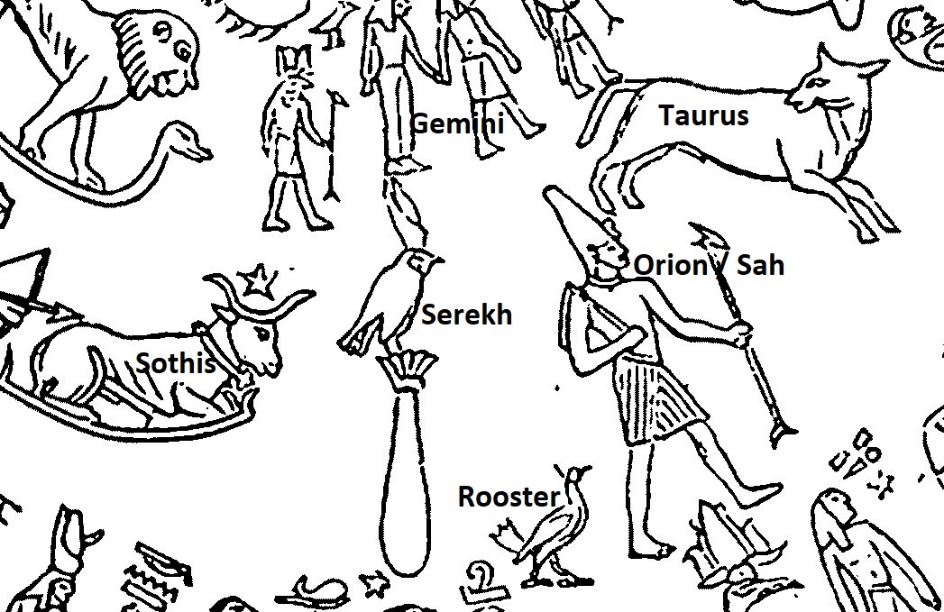
Figure 4: A Sketch of the Dendera Zodiac in the Popular Bible Encyclopedia of Archimandrite Nicephorus (1891). Source: Wikimedia Commons, Public Domain. Link.
Right behind Sah on the Dendera Zodiac is a “crested bird”. Gavin White mentions that, in the Babylonian star catalogue, a “Rooster” is located behind the figure of the “True Shepherd of Anu”, corresponding to the position of the Lepus constellation.5 The rooster is also a popular symbol of Kartikeya. While the peacock serves as his vahana i.e. animal mount, the rooster is the emblem on his flag. On many coins issued by the Yaudheya rulers of Northwestern India (c. 5th century BCE – 4th century CE), who ruled in the land between the Indus and Ganges Rivers, Kartikeya is depicted holding a spear or scepter, with a cockerel by his side – bearing a strong resemblance to the depiction of Sah on the Dendera Zodiac.
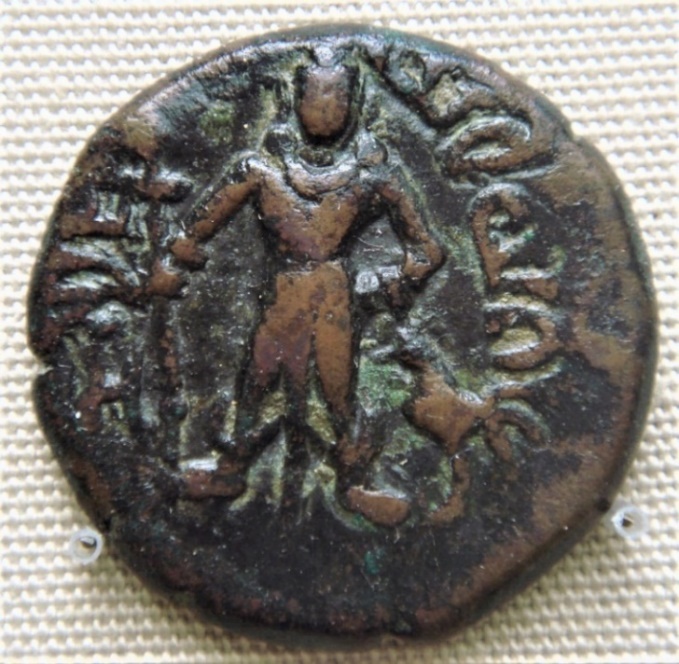
Figure 5: Kartikeya holding a spear / scepter with a cockerel to his left. Coin of the Yaudheyas, British Museum. Credit: PHGCOM CC-BY-SA 3.0. Link.
Thus, Kartikeya is associated both with Orion as well as Sah on the Dendera Zodiac. This opens up a new door for understanding the symbolism of this sky chart, for the legend of Kartikeya killing the buffalo-demon Mahisha with his spear (or Shakti) perfectly explains the imagery of Orion facing the charge of Taurus the bull.
Kartikeya Slays Mahisha
The Markandeya-Samasya Parva6 of the epic Mahabharata describes in great detail the fight between the gods and the daityas (demons), in which Kartikeya, who was leading the celestial forces as their commander, slew the evil, shape-shifting, buffalo-demon called Mahisha using his spear. The battle had taken place near the sacred Sarasvati River in Northwest India, and the Mahabharata tells us that, when Mahisha was killed, “his head massive as a hillock, falling on the ground, barred the entrance to the country of the Northern Kurus.” It was because of this terrific act of killing Mahisha that Kartikeya was given the epithet Mahishardana (The slayer of Mahisha). Indra, the King of the Gods, said to him, “this victory shall be celebrated as thy first achievement, and thy fame shall be undying in the three worlds.”
This is the earliest account of the slaying of Mahisha found in any Indian text. However, sometime around the 5th century CE – with the composition of the Devi Mahatyma – this feat of killing Mahisha became associated with the goddess Durga. Subsequently, there was a decline in the popularity of Kartikeya all over Northern India, although his appeal remained undiminished in Southern India. I had explored the possible reasons for this transference of mythology, in a previous article titled, “A Harappan tablet depicts Kartikeya slaying the buffalo-demon Mahisha”.7
I had also proposed that the image depicted on Harappan molded tablet (H95-2486) shows Kartikeya killing the buffalo-demon Mahisha with his spear, in the presence of his father Rudra-Shiva. The yogi with the horned headdress who is watching the scene is the same entity depicted on the Pashupati seal whom Sir John Marshall had identified as an early prototype of Lord Shiva. As per the Mahabharata, Rudra-Shiva was present on the battlefield to witness the slaying of the buffalo-demon Mahisha by Kartikeya.

Figure 6: A sketch of Harappa molded tablet H95-2486, depicting Kartikeya killing Mahisha with his spear, in the presence of the seated yogi, Pashupati-Shiva. This is the legend of Orion, facing the charge of Taurus, the bull. Credit: Bibhu Dev Misra. Click here, to see the original seal image.
Kartikeya is grasping the buffalo’s horn with his extended left hand, while his right arm is upraised and holding the spear. This is similar to the manner in which Orion is shown on the Greek sky charts. Kartikeya’s spear has been thrust into the shoulder of the charging buffalo, and this is where the Pleiades star cluster is located.
In Indian legends, the Pleiades has a strong connection with Kartikeya. In Vedic astronomy, the Pleiades star cluster is known as the Krittika nakshatra. The six prominent stars of the Pleiades are regarded as the six Krittika sisters. They were the wives of six of the Seven Sages (Saptarshis), who are represented in Vedic astronomy by the seven prominent stars of the Ursa Major (Great Bear / Big Dipper) constellation. The six Krittika sisters had moved away from their husbands in order to nurse the infant god Kartikeya, and only one of them (Arundhati) stayed back with her husband (Vasistha). Vasistha-Arundhati are the binary double Mizar-Alcor in the Ursa Major constellation.
The term Krittika means “one who cuts”, and its symbol is a sharp tool such as a knife or spear. The Krittikas were also identified with the Sapta Matrikas (Seven Mothers) of Hinduism, who took on the forms of ferocious warriors and assisted the goddess Durga in her battle against the demons. The Sapta Matrikas are regarded as the seven Shaktis (the term “Shakti” means the primordial cosmic energy of the universe) of the goddess Durga.
Thus, the Pleiades constellation is symbolized by a “spear”, and the Krittika sisters are regarded as the “Shaktis” of Durga. This means that the spear or Shakti used by Kartikeya for killing Mahisha represents the Pleiades. On the Harappa tablet, the spear has been thrust into the shoulder of the charging buffalo, and this is where the Pleiades are located in the ancient star maps – on the shoulder of Taurus, the bull. This is the point where the energy or Shakti of the Krittikas has been focused in order to slay Mahisha. In essence, therefore, Kartikeya slays Mahisha with the help of the Pleiades, who have transformed into his weapon.
Thus, all the elements of the story of Kartikeya slaying the buffalo-demon Mahisha fall into place in this sky chart. Orion, the hunter, is Kartikeya, Taurus is the buffalo-demon Mahisha, while the Pleiades represents the spear of Kartikeya which has been thrust into the shoulder of Mahisha. Evidently, this part of the sky was envisioned as a grand storyboard to immortalize the tremendous feat of Kartikeya.
Having understood the mythological backdrop of this sky chart, let us go back and try to figure out who the deity Sah / Orion on the Dendera Zodiac truly represents in the Egyptian context.
Horus is Orion
There is a general perception that the Orion constellation represents Osiris, although this association has not been explicitly specified in any Egyptian text. On the contrary, the Greek biographer Plutarch wrote that the Egyptians regarded the Orion constellation to be sacred to Horus, the falcon-headed sky god. In De Iside et Osiride (“Concerning Isis and Osiris”), Plutarch wrote:
“Moreover, they give to Osiris the title of general, and the title of pilot to Canopus, from whom they say that the star derives its name; also that the vessel which the Greeks call Argo, in form like the ship of Osiris, has been set among the constellations in his honor, and its course lies not far from that of Orion and the Dog-star; of these the Egyptians believe that one is sacred to Horus and the other to Isis.”8
Since the Dog-star is known to be sacred to Isis, this means Orion was sacred to Horus. As we noted earlier, Sah / Orion on the Dendera Zodiac is called the “Fleet-footed” or “Long-strider”. Both of these epithets are applicable to Horus, who was symbolized by the falcon – the fastest animal on our planet. Osiris, on the other hand, was restricted to the Underworld. He was depicted in a mummified form as he had been murdered by Set and was restored to life by Isis.
In addition, Sah / Orion was depicted like Horus, in a striding form, holding the was scepter in his outstretched left hand. Osiris was typically represented in a standing or seated posture holding the crook and the flail across his chest. So, the epithets of Sah as well as his iconography, reminds us of Horus, and not Osiris.

Figure 7: On the Dendera Zodiac, the striding Sah / Orion carries a “was scepter” and wears the White Crown of Upper Egypt. Source: Wikimedia Commons, Public Domain. Link.

Figure 8: Horus and Hathor receiving a scarab offering from the Pharaoh. Temple of Horus at Edfu, Egypt. Credit: Bibhu Dev Misra.
On the Dendera Zodiac, the symbol of the “Horus falcon on a perch” is right behind the figure of Orion / Sah. This symbol does not correspond to any known constellation in the Greek or Babylonian systems. In Egypt, the symbol of the Horus falcon perched on a stylized palace enclosure was called the Serekh. The name of the pharaoh was written within the Serekh. It indicated that the living king was a manifestation of Horus on earth.
The Serekh was the earliest of the king’s symbols, used since the beginning of the Old Kingdom. The presence of this symbol behind Sah suggests that it is the banner or standard of Sah; and that Sah is Horus from whom the heavenly mandate to rule descends to the earthly king.

Figure 9: Serekh of Pharaoh Djet, 1st Dynasty, from his tomb at Abydos, Egypt. On display at the Louvre Museum. Credit: Guillaume Blanchard CC BY-SA 1.0. Link.
The Narmer Palette (c.3100 BCE), found at the Temple of Horus at Nekhen, provides one of the earliest depictions of the Egyptian king. Here, King Narmer is depicted like Orion on the Greek sky charts, with striding legs, holding a mace in his upraised right hand, and grasping the hair of a kneeling enemy with his outstretched left hand. Since the King was the living manifestation of Horus on earth, and the king was depicted like Orion, it implies that Orion is Horus. In front of the King is the Horus falcon, perched above a set of papyrus flowers – symbolizing kingship and the divine mandate to rule. On the top of the palette are two human faced bovine heads which are thought to be those of the cow-goddess Bat or Hathor – the consort of Horus.
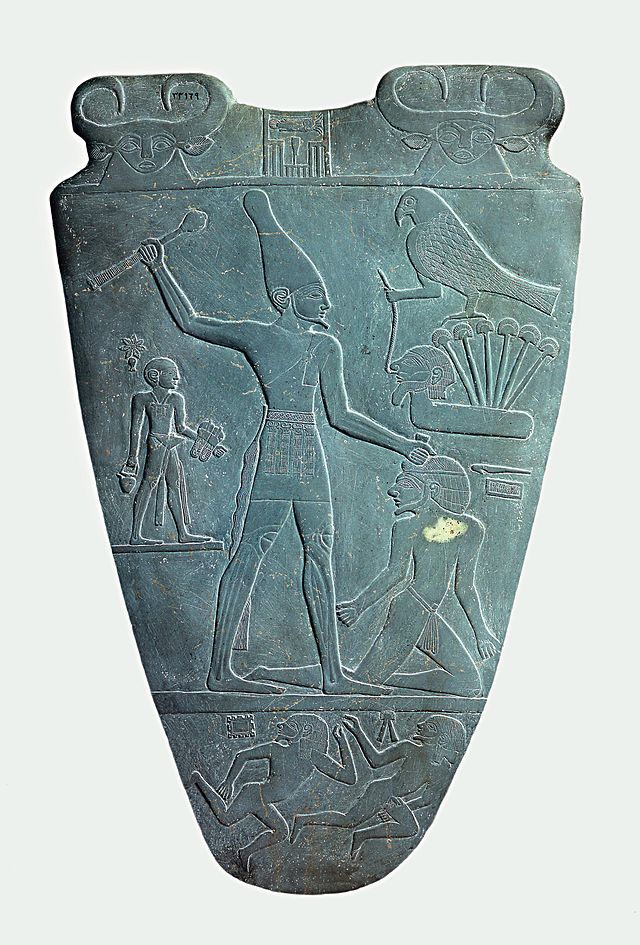
Figure 10: The Narmer Palette c.3100 BCE, Egyptian Museum, Cairo. Source: Wikimedia Commons, Public Domain. Link.
Incidentally, the symbol of a “bird on a perch” was also a symbol of royalty in India, where it is called the Garuda banner or Garuda standard, Garuda being the eagle mount (vahana) of Vishnu. A number of coins issued by the Gupta Emperors show the king holding a scepter or weapon in his left hand, standing next to the Garuda banner.
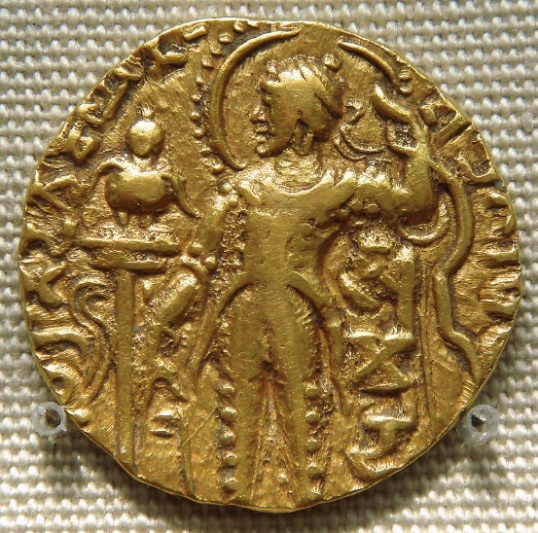
Figure 11: Garuda banner on a gold coin issued by Emperor Samudragupta (c.335-380 CE). The King is holding a bow in his hand. British Museum. Credit: PHGCOM CC BY-SA 3.0. Link.
Coming back to the Dendera Zodiac, behind the Serekh or “Horus falcon on a perch” we can see a “cow on a bark” which represents the Egyptian goddess Sothis (Sopdek) – the personification of the star Sirius. Sothis was regarded as the consort of Sah, which would mean that she is the goddess Hathor, the consort of Horus. The iconography certainly attests to that. Hathor not only wears a headdress of cow horns with a solar disk, but in many depictions she is depicted as a cow, either protecting or nursing the pharaoh. Hathor was the goddess of waters, milk, nourishment and fertility, and Sothis was also associated with floods and fertility since the heliacal rising of Sirius preceded the annual flooding of the Nile.
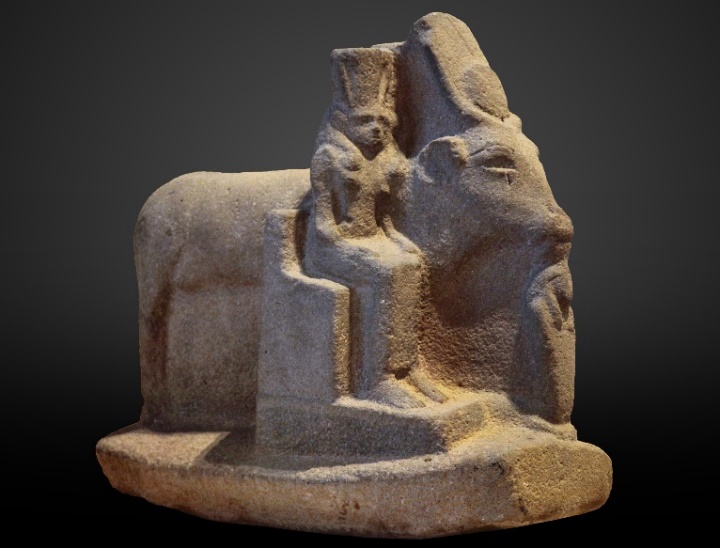
Figure 12: Hathor depicted in the form of a standing cow, flanked by three different forms of Hathor, seated with a crown, standing with lioness head (Sekhmet), and female headed serpent. Ramesside period (c.1295 – 1069 BCE) from Deir el-Medina, on display at Musee du Louvre, Paris. Credit: Rama CC BY-SA 3.0. Link.
If Sothis is Hathor, one might ask as to why the Egyptians regarded the star Sirius as being sacred to Isis. The answer is simple: Isis and Hathor are two names of the same goddess. Hathor was thought of not only as the consort of Horus but also as his mother, and there are many images of the Hathor-cow nourishing the infant Horus in a papyrus thicket. In fact, Egyptologists believe that Hathor was originally Horus’s mother, before that role was taken over by Isis. Similarly, Isis was not only the mother of Horus, but in some cases she was his consort. For instance, Horus was syncretized with the fertility god Min, and Min is said to have impregnated his mother Isis to engender himself. Thus, Isis was also regarded as Min’s consort.
It appears that Hathor was the consort of many Egyptian deities, before she became associated with Horus. So, what probably happened was that, she was the companion of Osiris (as Isis) when Horus was born, and later became the consort of Horus.
There is a parallel with Indian legends, here. Hathor’s counterpart in the Hindu pantheon is the goddess Lakshmi – the goddess of fertility of the soil, motherhood, and abundance – who is also worshiped in the form of a cow. Just as Hathor transformed into the fierce, lion-headed goddess Sekhmet in order to punish humanity for rebelling against the rule of the sun-god Ra, the goddess Lakshmi also manifested as the lion-riding, war-goddess Durga (as per the Devi Mahatmya) for battling the demons who had risen in war against the gods.
Lakshmi had been the consorts of many gods – Yama (the Vedic counterpart of Osiris), Kubera and Indra – before she settled down as the consort of Vishnu.9 As per the Mahabharata, however, Kartikeya’s consort Devasena is also called Lakshmi (hinting at a connection between Kartikeya and Vishnu). This belief is reflected in the coins minted by the Yaudheya rulers of Northwestern India, in which Devasena was shown standing next to a kalasha or “pot of plenty” – a symbol that was intrinsically associated with Lakshmi. Thus, Kartikeya-Devasena is the Indian counterpart of the Egyptian Horus-Hathor.
On the Dendera Zodiac, the Taurus constellation is shown in front of Orion / Sah, although it is not clear if they are battling each other. However, a panel on the ceiling of the Temple of Hathor in Dendera, depicts a bull being speared by a falcon-headed god, who is named here “Horus, fighter against enemies” (Click here for the image). The bull is believed to be a representation of Seth, the evil god of chaos and disorder, who was also called the “Bull of Ombos”. In fact, Seth has been depicted in a bull-headed, winged form on a limestone stela of the New Kingdom. The bull, here, is being held in chains by a hippopotamus goddess called Isis-Djamet (the mother/consort of Horus). The bull is surrounded by seven stars, which, in all likelihood, represent the seven prominent stars of the Pleiades. Thus, we have a remarkable depiction of Horus speating the Seth-bull, with the help of the Pleiades and Isis. This not only corresponds to the Hindu legend of Kartikeya killing Mahisha with his spear, but also provides a convincing explanation of the sky map of Orion facing the charge of Taurus, the bull.
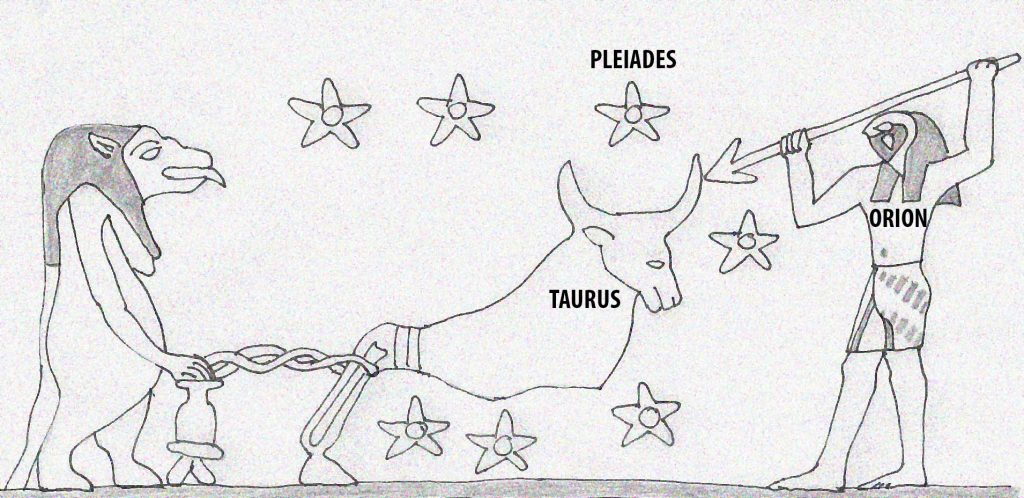
Figure 13: A pencil sketch of a panel in the Dendera Temple, Egypt. It shows Horus spearing the Seth-bull, who is held in chains by Isis-Djamet in the form of a hippopotamus. The seven stars of the Pleiades encircle the bull. Credit: Bibhu Dev Misra. Click here for the original image.
The Egyptian understanding of the Pleiades was strikingly similar to that of the Indians. As per the Egyptian texts, the goddess Hathor manifested as the “Seven Hathors”, who are identified with the seven stars of the Pleiades. This shows an exact correspondence to the Indian notion of the Sapta Matrikas (Seven Mothers), who are regarded as the manifestations of the goddess Durga / Lakshmi, and are identified with the Pleiades. The Seven Hathors were shown as beautiful women carrying tambourines and wearing a cow-horned headdress with a sun disk in the center (like Hathor). The Seven Hathors celebrate the birth of a new child, and make infallible prophecies about his future. In a similar vein, the Sapta Matrikas of Hinduism were venerated as the protectors of infants and children.

Figure 15: The Sapta Matrikas (Seven Mothers) depicted as dancers and warriors. They are flanked by Shiva and Ganesha. Madhya Pradesh, 9th century. Source: Los Angeles County Museum of Art (LACMA), Public Domain. Link.
In the legend of Osiris and Isis, after Isis gives birth to Horus in the papyrus thickets of the Nile Delta, she travels among humans and seeks their help. According to one such story, seven minor scorpion deities travel with her and guard her. They take revenge on a wealthy woman who refused to help Isis by stinging the woman’s son, making it necessary for the goddess to heal the blameless child.10 The seven minor scorpion deities are probably the Seven Hathors, for even Isis sometimes manifested as a scorpion. As per the Indian tradition, the Sapta Matrikas inflict diseases on infants if they are displeased, which is exactly what the seven scorpion deities did in the Egyptian legend.
Thus, the connections between Kartikeya and Horus are far-reaching – extending at a symbolic, iconographical and mythological level – and leave little room for doubt that they are the same deity, albeit in different cultures. Let me sum up some of these associations:
- Kartikeya was born in a field of reeds and was nursed by the six Krittika sisters (or Seven Mothers), and Horus was born in a papyrus thicket in the Nile marshlands, and was nursed by Isis and the Seven Hathors.
- Kartikeya was the god of war and royalty, whose emblem were the peacock and the rooster while Horus was the war-god of Egypt, and the emblem of the “Horus falcon on a perch” symbolized kingship in ancient Egypt.
- Kartikeya killed the buffalo-demon Mahisha using his spear, while Horus defeated the Seth-bull by spearing him.
- Kartikeya was assisted in his battle against Mahisha by the Seven Mothers i.e. the Pleiades sisters, while Horus was assisted by his mother Isis and the Seven Hathors i.e. the Pleiades.
- Horus’s consort Hathor was the goddess of fertility and motherhood, and Kartikeya’s consort Devasena was also called Lakshmi, who symbolized fertility, wealth and motherhood.
- Horus was frequently depicted as a child and one of his names is Harpocrates (“Horus the Child”), while Kartikeya is regarded as a youthful god and one of his popular epithets is Kumara (meaning “child”).
- Another name of Horus was Haroeris (“Horus the Elder)”, in which form he is the defender of order and upholder of truth. Kartikeya, too, is an indefatigable upholder of truth and dharma.
- Horus as Harmakhis (“Horus in the Horizon”), represented the dawn and the morning sun, while Kartikeya has been described as a “Red God” who “shines like the sun rising in the midst of red clouds,”11 and his emblem – the rooster – is the herald of the dawn.
Another question that was of interest to me is the identity of Orion in the Babylonian pantheon, where he was called the “True Shepherd of Anu”. Gavin White believes that the “True Shepherd” was the Akkadian god Papshukal. Papshukal functioned as a “gatekeeper” to the higher deities. He was invoked to intercede with the higher gods and goddesses on behalf of human supplicants.12 Gavin White writes that the rooster is the “animal symbol” of Papshukal, since on many Babylonian boundary stones he was represented by the figure of a crested walking bird.
However, I found it difficult to associate Orion with a relatively minor deity like Papshukal who functioned as an attendant or gatekeeper to the higher deities. Both Horus and Kartikeya are exceedingly important and powerful deities of their respective pantheons. So the Babylonian counterpart of Orion must have been equally powerful. Perhaps, Papshukal was known by another name? Or, maybe there was another god who was associated with a rooster?
Nergal, Apollo and Orion
One of the interesting connections between Horus and Kartikeya is that they were both nurtured by the Pleiades sisters. In addition, Kartikeya used the Pleiades as his “weapon” – the spear or Shakti – to slay the buffalo-demon Mahisha. I was curious, therefore, to find out if there was a Babylonian deity who was also closely associated with the Pleiades.
And indeed, there is. He is Nergal – the son of Enlil – the deity of war and plagues, generally depicted holding a mace and a scimitar. Nergal was invoked as a protector, and was called upon in prayers to battle evil demons and spirits. He was addressed by epithets such as the “the strong one”, the “scorcher”, who protected the country “like a bolt” 13.
Like Kartikeya, Nergal is “the one who goes in front”, and like Horus, he is the “caretaker of the king”.14 Due to his strength, he was compared to a bull or lion. Nergal’s (Erra’s) self-introductory statement in the Epic of Erra serves as a guide to his iconography: “In heaven I am a wild bull, in the netherworld I am a lion, in the land I am king, among the gods I am the fierce one…on the war path I am the standard.”15
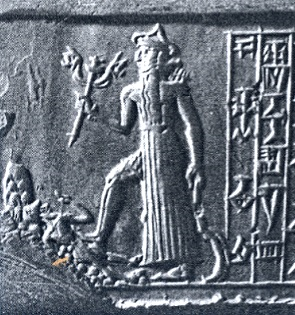
Figure 16: Nergal holding a double-lion mace and a scimitar. Fragment of an impression of seal from Larsa, 2nd millennium BCE, Baghdadi Museum. Credit: Umbisag CC BY-SA 4.0. Link.
Like Horus and Kartikeya, Nergal’s presence was required to defend the kingdom and maintain peace and order. This is why he also had the title Lugal-Silimma (The lord of peace). F. Wiggerman writes, “The complementary character traits of the armed god are expressed by the names of his two dragons at the gate of the Emeslam, his temple in Kutha: War and Peace.”16 This matches with the traits of Kartikeya, who, in spite of being a warrior god, was wise, pure and tranquil, and the doer of good acts, as indicated by his epithets such as Prasantatman (Of tranquil soul), Suchi (The pure), Bhadrakrit (The doer of good).17
Nergal was closely associated with the “Seven Gods” or Sebettu / Sebitti, who were seven warrior-gods associated with the Pleiades. On seals, they were represented by seven dots or seven stars. The Seven are described as “seven awesome weapons” fashioned by Anu, who could “turn the lands desolate and make the people perish”. Armed with bows and arrows, battle axes and swords, they followed their leader Erra (Nergal) into battle. Marduk, the King of the Gods in the Babylonian pantheon, is accompanied on his military campaigns by Nergal and the Sebettu. The Acrostic hymn to Marduk states, “On your left is Erragal (Nergal), the strongest one of the gods, in front of [you go] the valiant Pleiades.”18
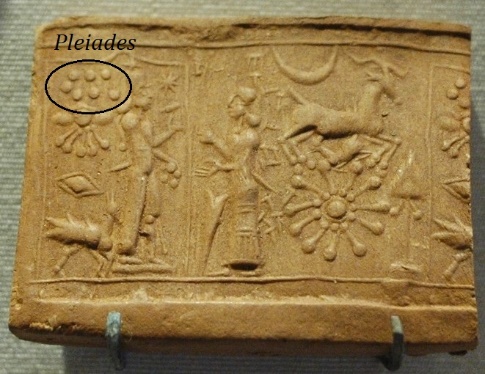
Figure 17: A Mesopotamian cylinder seal showing the cult worship of Shamash. The cluster of seven dots in the sky are the Pleiades or Sebettu. Source: Wikimedia Commons, Public Domain. Link.
Evidently, the Sebettu are connected to the Krittikas or Sapta Matrikas (Seven Mothers) of Hinduism, who are associated with the Pleiades and have been portrayed as ferocious warriors on the battlefield. Both sets of deities and function as the “weapons” of their leader – Kartikeya and Nergal!
Another interesting fact about Nergal, which makes his association with Orion even more obvious, is that, according to the Talmudists his emblem was a rooster or cockerel19. In fact, the name Nergal means a “dunghill cock.”20 Nergal also had the epithet Lugal-banda meaning, “Nergal as the fighting-cock”. Thus, Nergal was not only a war god like Horus and Kartikeya, he was strongly associated with the Pleiades and had a rooster as his emblem. This is a clear indication that Nergal was represented by Orion / Sah on the Dendera Zodiac.
Wiggerman writes that, “In SB Akkadian texts Nergal is sometimes the son or offspring of Anu”.21 This implies that Nergal is also deserving of the epithet, “True Shepherd of Anu”, which is the term for Orion in the Babylonian star catalogues. Papshukal may have been a local name for him, for, in the god list An = Anum, Papshukal belongs to the circles of gods Nergal and Enki.22 This is probably why Papshukal’s cult was later merged with that of Ninsubur, for Ninsubur was one of the many wives of Nergal.
Nergal was not only a solar god, closely allied to Shamash (the sun-god), but he was also the “Lord of the big city (netherworld)”, where the souls enjoy a communal afterlife.23 Since Nergal was married to Ereshkigal, the “Queen of the Netherworld”, he spent part of his time in the sky and part in the netherworld.
Interestingly, on the Dendera Zodiac, just above the figure of Sah is the astrological symbol of Gemini, represented by the twins Castor and Pollux. According to Gavin White, in the Babylonian star catalogue, Gemini is called the Great Twins, “who are closely related to Nergal, the king of the dead in Mesopotamia tradition. The Twins stand guard, weapons at the ready, at the entrance to the underworld.”24 Not surprisingly, they have been depicted close to Nergal on the sky chart.
The iconography of Nergal provides some important insights into the symbolism of the ancient star maps. A Parthian relief of Nergal shows him holding a sword and a battle axe. He is surrounded by serpents and scorpions, indicating his status as the “Lord of the Netherworld”. Kartikeya is also the “Lord of Serpents”, and is sometimes depicted standing under a serpent hood.
A bird is perched on top of Nergal’s forehead, probably his emblem – the cockerel. Interestingly, Nergal’s waist band or belt is tied to a multi-headed dog with a serpent tail – which is the same dog that the Greeks knew as Cerberus, the hound of Hades (the Lord of the Underworld in Greek legends). Cerberus corresponds to Sarvara, the dog of Yama (the God of the Dead in Vedic beliefs). In nearly every ancient culture, dogs were believed to conduct (or accompany) the souls of the dead to the otherworld. It appears from this relief that, it is Nergal who is ultimately in charge of ensuring the safe passage of the souls of the deceased to the netherworld.
This iconography of Nergal is perfectly matched with the star map of Orion and his hunting dogs. The three belt stars of Orion point to the star Sirius, which the Greeks called the “Dog Star”. Sirius is part of a larger constellation known to the Greeks as Canis Major i.e. Greater Dog, which was said to be Orion’s hunting dog. Thus, a Parthian relief of a Mesopotamian deity explains some elements of the star maps of the Greeks and the Egyptians!
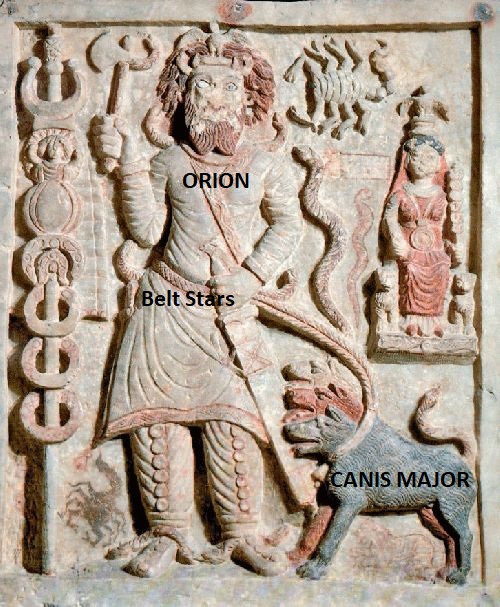
Figure 18: Ancient Parthian relief carving of Nergal from c.1st or 2nd century CE. Nergal’s belt is tied to multi-headed “hound of Hades”. Source: Wikimedia Commons, Public Domain. Link.
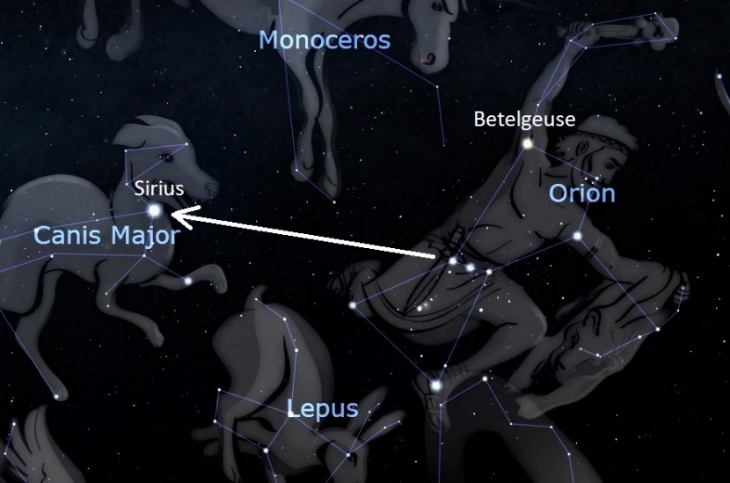
Figure 19: The three belt stars of Orion point directly to Sirius or Dog Star. Sirius is part of the Canis Major or Greater Dog constellation. Creted using Stellarium software. Credit: Bibhu Dev Misra.
It may be somewhat surprising to find that Nergal is both a powerful god of the heavens and a lord of the netherworld. But, in Egypt as well, we find that it is Horus, the Lord of the Skies, who conducts the soul of the deceased to Osiris. In the Book of the Dead of Hunefer, for instance, after Hunefer’s soul is weighed against feather of Ma’at and found to be “justified”, he is brought into the presence of Osiris by Horus. This shows that the domain of Horus encompasses the heavens as well as the underworld, and he ensures the safe passage of the souls of the righteous to the afterlife.
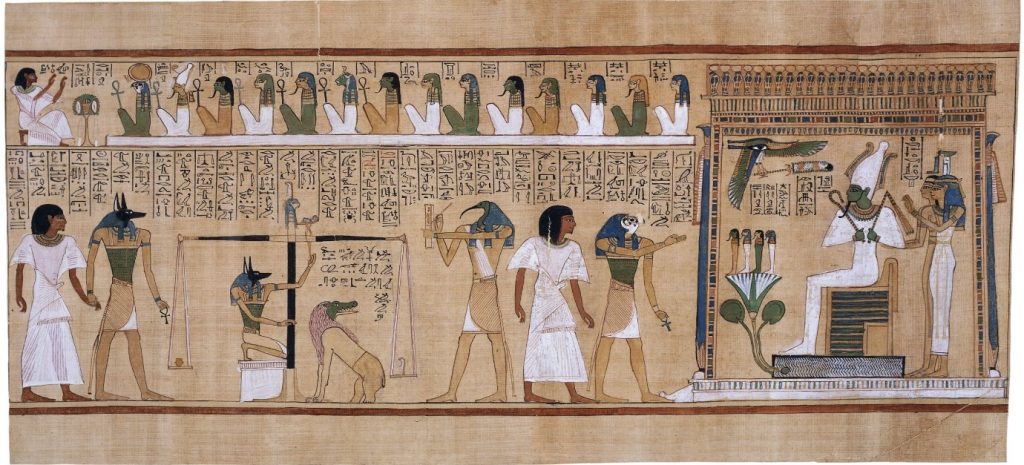
Figure 20: The Judgement of the Dead in Book of the Dead of Hunefer. Hunefer was a royal scribe of the New Kingdom, 19th Dynasty, c1300 BCE. British Museum. Source: Wikimedia Commons, Public Domain. Link.
Another interesting epithet of Nergal takes us deeper into the mystery. Nergal was called Aplu Enlil in Akkadian, meaning “son of Enlil”, who was transformed into the Hurrian and Etruscan Aplu, the god of plague. Scholars believe that Aplu was transformed into the Greek god Apollo who was associated with plague and healin – just like Nergal.25 Apollo was invoked to bring plague and death to the enemies with his arrows, and since the god who brings plagues is also capable of removing it, Apollo was appeased for healing, protection and averting evil. A number of his epithets refer to his ability to heal and protect, such as Paean (healer), Medicus (physician), Alexicacus (keeping off ill), Apotropaeus (averting evil) etc. Both Nergal and Apollo also looked after agriculture and flocks.

Figure 21: Apollo Killing Python by Hendrik Goltzius (1558-1617). Apollo, here, is depicted in the form of Orion. Source: LACMA, Public Domain. Link.
Apollo and his sister Artemis were portrayed as “hunters” and exceptional “archers”. Apollo’s killing of Typhon corresponds to Horus’s defeat of Seth, for, according to Plutarch, Seth is the embodiment of Typhon – the monster with a hundred dragon heads. If we look at the star map of Orion it is possible to visualize him holding a bow in his extended left hand, with arrows in his upraised right hand. A straight line drawn through the stars Betelguese (which defines the right shoulder of Orion) and Meissa (near Orion’s mouth) points directly to the Pleiades – whose symbol in the Vedic astrological system is a sharp tool like an arrow or a spear. Interestingly, an arrow is typically released from a point close to the right shoulder. Of course, in this case we need to assume that Orion’s bow is a bit longer, and he is holding it at a slightly higher point with his left hand, as shown in the next figure.
Incidentally, Akkadian texts regularly mention Nergal’s bow, quiver and arrows26, while in Eastern India, Kartikeya is always portrayed holding a bow.
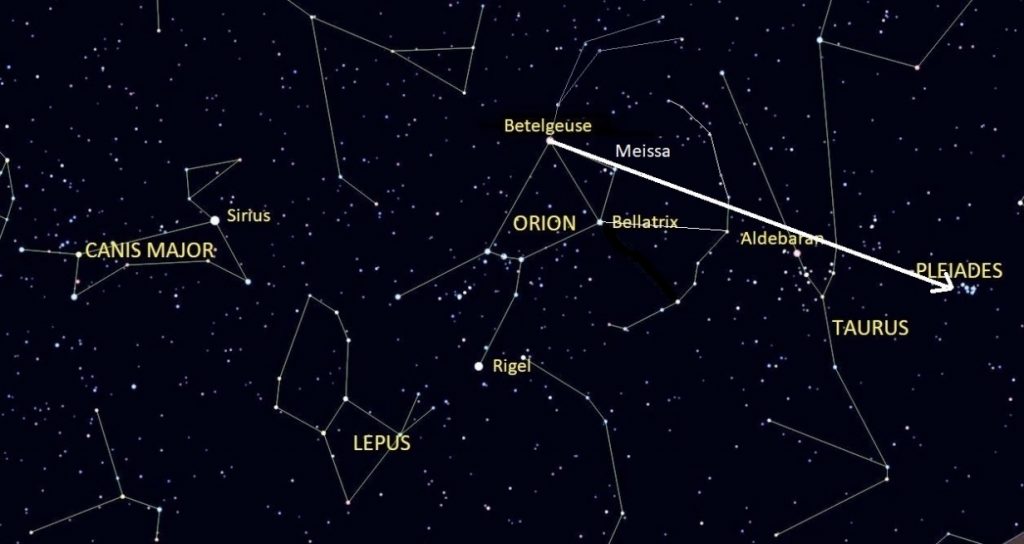
Figure 22: Orion can be visualized in the form of an archer. A straight line drawn through the stars Betelgeuse and Meissa points directly to the Pleiades, whose symbol is an arrow or spear. Created using SkyChart software. Credit: Bibhu Dev Misra
Like Orion and Kartikeya, Apollo was regarded by the Greeks as being the epitome of youthful beauty (kouros). The nine muses who follow Apollo, and are exceptionally talented in music, poetry and oratory, are reminiscent of the Pleiades sisters who accompany Horus, Kartikeya and Nergal. As we have noted, the Seven Hathors’ are depicted in Egyptian art holding tambourines in their hands. Apollo is also closely associated with the sun-god Helios, and is known by epithets such as Phoebus (“bright”) and Phanaeus (“light bringer”). As discussed earlier, Nergal is associated with the sun-god Shamash, while Both Horus and Kartikeya are associated with the dawn and the rising sun. Thus, they are all solar deities and light bringers.
We can infer that, in the Greek mythological context, Orion is Apollo. Homer wrote in the Odyssey that Apollo had a falcon as his messenger27, while as per the Roman author Aelian, “the Egyptians appear to regard the Hawk as sacred to Apollo, calling the god ‘Horus’ in their own language.”28 Eusebius wrote, “the second appearance of the moon is held sacred in the city of Apollo (in Egypt): and its symbol is a man with a hawk-like face (Horus), subduing with a hunting-spear Typhon in the likeness of a hippopotamus (Set).”29 Clearly, Eusebius is referring to the struggle between Horus and Set, in which Horus used a harpoon to defeat Set, who had taken the form of a hippopotamus (as per the Twentieth Dynasty version of the story). This event was re-enacted during the annual Festival of Victory at the Temple of Horus at Edfu, where the king played the role of Horus and speared a live hippopotamus. However, as we have already noted, Seth was also depicted in the form of a bull (“the Bull of Ombos”), and it was in this form that he was speared by Horus, with the assistance of Isis and the Pleiades, as depicted on a panel in the Temple of Hathor at Dendera.
We have now come a full circle by moving from Nergal -> Apollo -> Horus. The Orion of the ancient star maps, quite clearly, was an extremely important and multifaceted deity of the ancient world. He was the Horus of Egypt, Kartikeya of India, Nergal of Mesopotamia and Apollo of the Greeks. The god of war and the skies, he was the most powerful of all the gods. Invincible in battle, he could not only bring death, fire, and disease, but he also had the power to heal, protect, and establish peace and order. He was closely associated with the Pleiades – ferocious warriors who followed him to the battlefield – and also acted as divine musicians and caretakers of children. Orion’s killing of the buffalo-demon – who was called Mahisha in India, Seth in Egypt and Typhon in Greece – using the Pleiades as his weapon, restored order to a chaotic world, and this significant feat was envisioned in the sky in the form of Orion facing the charge of Taurus, the bull.
Orion was a solar deity, closely associated with the dawn and the rising sun, which is why he was perceived as the “light bringer”. At the same time, he was also the “Lord of the Netherworld”, and his association with serpents reveals his wisdom and ability to heal. He was associated with the rooster – the herald of the dawn – which corresponds to the Lepus constellation in the Babylonian star charts. The falcon – the king of the skies – was sacred to him and acted as a symbol of kingship and a war-standard for many cultures. Orion ensures the safe passage of the souls of the dead to the otherworld with the help of his hounds, which are shown attached to his belt, and was imagined in the sky in the form of the Canis Major constellation. The Canis Major was also imagined as Orion’s consort, the goddess of wealth, fertility and prosperity.
The ancient star maps of Greece and Egypt, therefore, encode many legends and symbolisms which were scattered throughout the world in antiquity. How did these stories and symbols end up in ancient Greece? What factors led to the formulation of these star charts? This is something that I will attempt to explore in the final section.
The Origin of the Star Maps
It is known that the Greeks had obtained much of their knowledge of the constellations from the Phoenician sailors. Both Hesiod and Homer – in whose writings we find the earliest mentions of the constellations – were deeply influenced by the mythologies of the Phoenicians, whom they met at Lefkandi, the center of Greek culture from c. 750 BCE – 630 BCE. The Phoenicians were sailing to many distant ports, and it is now becoming increasingly evident that a vast Bronze Age maritime trading network was in operation for thousands of years prior to the historical era. We don’t know how far back it goes, but it was definitely in operation throughout much of the Bronze Age.
A few recent discoveries have thrown the lid open in this subject. In 2020, a team of researchers led by Harvard University Prof. Christina Warinner and University of Munich Prof. Philipp Stockhammer examined microremains and proteins preserved in the tooth tartar of individuals who lived during the 2nd millennium BCE in the Southern Levant. The scientists discovered non-native, outlier foodstuffs such as soybeans, turmeric and bananas, which pushes back the earliest evidence of these foods in the Mediterranean by centuries (turmeric) or even millennia (soybean). “This is clear evidence of trade with southeast Asia as early as the 16th century BCE – much earlier than previously assumed,” said Tel Aviv University Prof. Israel Finkelstein, who is an author in the study.30
The study, “Exotic foods reveal contact between South Asia and the Near East during the second millennium BCE,” was published in the Proceedings of the National Academy of Sciences (PNAS) journal in January 2021.31 “These insights force us to rethink the complexity and intensity of Indo-Mediterranean trade during the Bronze Age as well as the degree of globalization in early Eastern Mediterranean cuisine,” the authors wrote in the paper.
Another study performed by an international group of scientists in 2019 found that ancient tin ingots found at multiple sites in Israel, dating to the 13th – 12th century BCE, most likely came from the tin mines of Cornwall and Devon in England.32 This points to a complicated and far-reaching ancient trade route that crisscrossed the Mediterranean. Their paper was published on the open-access, peer-reviewed scientific journal PLOS One.33
These findings are completely upending the traditional mainstream narratives about the evolution of civilizations, and confirming what many independent researchers have been arguing about for decades. If trading ships plied between the Mediterranean and India, we can be quite certain that they sailed all the way across South-east Asia to China. The ancients did not consider the oceans to be a barrier, rather they looked upon it as a superhighway for trade and communications. Our world was not divided up and sequestered into discrete pieces where civilizations emerged in isolation. Rather every civilization was connected by a web of maritime and overland trade routes to other cultures, both near and distant. The traders who plied on these routes collected legends, beliefs and star lore from various places, and disseminated them amongst the people at their ports of call. Therefore, the star maps of Greece are most likely to be an amalgamation of legends and beliefs that were in circulation across vast swathes of the world during the 7th century BCE.
How far back do these star legends go? Since when did the ancients begin to identify specific star patterns in the night sky and associate them with characters and events from their legends? Here, I shall revert to an article titled “12,000-Year-Old Petroglyphs in India show Global Connections”34 that I had written earlier, where I had discussed some of the sacred symbols that are depicted in the petroglyphs discovered at the site of Ratnagiri on the western coast of India. A couple of astrological signs are clearly discernible: that of Pisces, depicted by two fishes facing opposite directions and connected by a strap; and that of Aquarius, pouring water from a pot held over his head, standing in the midst of the Pisces and Piscis Austrinus constellations.
Intriguingly, these petroglyphs were dated by the Maharashtra State Archaeology Department to around 10,000 BCE, which suggests that, at least some of the astrological symbols that are in use today are a legacy of a lost civilization that flourished during the Ice Age. While some people might be surprised by such an early dating of these petroglyphs, I would like to point out that dozens of similar petroglyphs were discovered in the Sindhudurg district of Maharashtra in 2002, which were dated to between 7000 BCE – 4000 BCE. So, it has always been accepted that the petroglyphs on the western coast of India are very old and predate the known civilizations of antiquity.
This means that, many star patterns and astrological symbols were identified thousands or even tens of thousands years ago, extending back to a lost civilization of the Pleistocene Ice Age. Plato wrote in the Critias that when the ten kings of Atlantis assembled at the Temple of Poseidon in the center of Atlantis (every fifth or sixth tear), they captured one of the bulls that roamed freely inside the temple complex, “and the bull which they caught they led up to the pillar and cut its throat over the top of it so that the blood fell upon the sacred inscription.”35 Why would the kings of Atlantis sacrifice a bull over the sacred pillar on which the commands of Poseidon were inscribed? Were they were re-enacting a bull-slaying scene, which was of immense significance and possibly associated with Poseidon?
Could Orion be simply another name of Poseidon? As per the Greek texts, Orion was the son of Poseidon, but that could have been easily mistaken in these texts which were written down much later. Poseidon is also closely related to Apollo (who had, in all probability, been adapted from the epithet Aplu Enlil, associated with Nergal). Like Apollo, Poseidon sends diseases, is invoked before battles, and the shrine at Delphi was originally dedicated to Poseidon before Apollo took it over.
What this implies is that, some of the ancient legends definitely originated before the beginning of the Holocene epoch. Our ancestors imagined certain patterns in the stars to correspond to specific persons (primarily deities and heraldic animals) and events, so that these ancient stories could be remembered and transmitted. Astrological ideas – regarding the influence of specific stars or groups of stars on human character and destiny – may have played a part in such efforts, particularly with respect to the zodiac constellations.
The sky was transformed by them into a canvas, a giant storyboard, where the ancient tales were etched out so that they could survive the ravages of time that destroy most written records. Unlike the modern day, where we are distracted by all the electronic gadgets at our disposal, the ancients valued their traditional knowledge and beliefs. They would have probably gathered around a fire under the night sky to listen to the ancient tales related by the elders in the family. In this manner, the legends were orally transmitted for generations. Over time, as the legends grew in number, more events and characters were transposed to the sky. Sailors who spent a long time at sea, and relied on the stars for navigation, may have come up with more patterns and constellations, and dispersed them amongst distant cultures.
It is quite likely, therefore, that the ancient star charts were compiled over tens of thousands of years, and reflect an amalgamation of legends from different parts of the world. The star map of Orion facing the charge of Taurus, with Pleiades sitting on the shoulder of the charging bull, may reflect one of the earliest and most significant episodes from the past. This is probably why the constellations of Orion and Taurus, together with the Pleiades asterism, are the not only brightest and most conspicuous ones in the night sky, but have also captured our collective imagination.
References
1 RV 7.46, tr. Griffith
2 The Mahabharata, Book 3: Vana Parva: Markandeya-Samasya Parva, Section 230, tr. Kisari Mohan Ganguli, 1883-1896, https://www.sacred-texts.com/hin/m03/m03230.htm
3 Ibid
4 Gavin White, Babylonian Star-lore, An Illustrated Guide to the Star-lore and Constellations of Ancient Babylonia, Solaria Publications, 2008
5 Gavin White, “A Brief Guide to the Babylonian Constellations”, Solariapublications Oct 25, 2011, https://solariapublications.com/2011/10/25/a-brief-guide-to-the-babylonian-constellations/
6 The Mahabharata, Book 3: Vana Parva: Markandeya-Samasya Parva, Section 230, tr. Kisari Mohan Ganguli, 1883-1896, https://www.sacred-texts.com/hin/m03/m03230.htm
7 Bibhu Dev Misra, “A Harappan tablet depicts Kartikeya slaying the buffalo-demon Mahisha”, Ancient Inquiries, April 23, 2021, https://www.bibhudevmisra.com/2021/04/harappan-tablet-kartikeya-killing-mahisha.html
8 Plutarch, De Iside et Osiride, Section 22, ed. Frank Cole Babbitt, http://www.perseus.tufts.edu/hopper/text?doc=Perseus%3Atext%3A2008.01.0239%3Asection%3D22
9 “Lakshmi”, New World Encyclopedia, https://www.newworldencyclopedia.org/entry/lakshmi
10 Meeks & Favard-Meeks 1996, pp. 82, 86–87, taken from “Isis”, Wikipedia.
11 https://www.sacred-texts.com/hin/m03/m03224.htm
12 “Ancient Mesopotamian Gods and Goddesses”, http://oracc.museum.upenn.edu/amgg/listofdeities/papsukkal/
13 F. Wiggerman, Nergal A. philologisch [in:] Reallexikon der Assyriologie und vorderasiatischen Archäologie vol. 9, 2001
14 Ibid
15 Ibid
16 Ibid
17 The Mahabharata, Book 3: Vana Parva: Markandeya-Samasya Parva, Section 230, tr. Kisari Mohan Ganguli, 1883-1896, https://www.sacred-texts.com/hin/m03/m03230.htm
18 Acrostic hymn to Marduk; Livingstone, 1989: no. 2l.r. 4, taken from “Pleiades in Ancient Mesopotamia” by Lorenzo Verderame, Mediterranean Archaeology and Archaeometry, Vol. 16, No 4,(2016),pp. 109-117.
19 “2 Kings 17:30”, Clarke’s Commentary on the Bible.
20 Ebenezer Cobham Brewer, “Cock and Bull story”, Dictionary of phrase and fable: giving the derivation, source, or origin of common phrases, allusions, and words that have a tale to tell, p. 268.
21 F. Wiggerman, Nergal A. philologisch [in:] Reallexikon der Assyriologie und vorderasiatischen Archäologie vol. 9, 2001
22 Litke 1998: 25, taken from “Ancient Mesopotamian Gods and Goddesses”, http://oracc.museum.upenn.edu/amgg/listofdeities/papsukkal/
23 F. Wiggerman, Nergal A. philologisch [in:] Reallexikon der Assyriologie und vorderasiatischen Archäologie vol. 9, 2001
24 Gavin White, “A Brief Guide to the Babylonian Constellations”, Solariapublications Oct 25, 2011, https://solariapublications.com/2011/10/25/a-brief-guide-to-the-babylonian-constellations/
25 Nancy Thomson de Grummond(2006), “Etruscan Myth, Sacred History, and Legend”, (Philadelphia, Pennsylvania: University of Pennsylvania Museum of Archaeology and Anthropology), taken from “Apollo”, Wikipedia
26 F. Wiggerman, Nergal A. philologisch [in:] Reallexikon der Assyriologie und vorderasiatischen Archäologie vol. 9, 2001
27 Homer, Odyssey, 15.525
28 Aelian, Characteristics of Animals, 10.14
29 Eusebius, Preparation of the Gospels, 3.12.1
30 Amanda Borschel-Dan, “Globalized’ early Bronze Age Levantines consumed exotic Asian nosh, study shows”, The Times of Israel, Dec 22, 2020, https://www.timesofisrael.com/globalized-early-bronze-age-levantines-consumed-exotic-asian-nosh-study-shows/
31 Exotic foods reveal contact between South Asia and the Near East during the second millennium BCE
Ashley Scott, Robert C. Power, Victoria Altmann-Wendling, Michal Artzy, Mario A. S. Martin, Stefanie Eisenmann, Richard Hagan, Domingo C. Salazar-García, Yossi Salmon, Dmitry Yegorov, Ianir Milevski, Israel Finkelstein, Philipp W. Stockhammer, Christina Warinner, Proceedings of the National Academy of Sciences Jan 2021, 118 (2) e2014956117; DOI: 10.1073/pnas.2014956117
32 Amanda Borschel-Dan, “Groundbreaking study: Ancient tin ingots found in Israel were mined in England”, Times of Israel, Sept 16 2019, https://www.timesofisrael.com/groundbreaking-study-ancient-tin-ingots-found-in-israel-were-mined-in-england/
33 Article Source: Isotope systematics and chemical composition of tin ingots from Mochlos (Crete) and other Late Bronze Age sites in the eastern Mediterranean Sea: An ultimate key to tin provenance?
Berger D, Soles JS, Giumlia-Mair AR, Brügmann G, Galili E, et al. (2019) Isotope systematics and chemical composition of tin ingots from Mochlos (Crete) and other Late Bronze Age sites in the eastern Mediterranean Sea: An ultimate key to tin provenance?. PLOS ONE 14(6): e0218326. https://doi.org/10.1371/journal.pone.0218326
34 Bibhu Dev Misra, “12,000-Year-Old Petroglyphs in India show Global Connections”, Ancient Inquiries, October 05, 2018,https://www.bibhudevmisra.com/2018/10/12000-year-old-petroglyphs-in-india.html
35 Plato, Critias (360 BC) tr. by Benjamin Jowett






Some of the various iconic character images that you identify as Orion, are subconscious expressions, or semi-conscious symbols, or conscious hour decans, analogous to other constellations or seasons, including Gemini (eg Narmer smiting his twin, eg Persian with canid), Aries (eg Nergal), the moving spring point, Ursa (seven dots, bull foreleg), the moving midsummer point, or Bootes /autumn. Decanal characters are prone to interchange and re-combination, as Neugebauer and Parker (1969) demonstrated among Egyptian astronomical icons. Calendric features make iconography as complicated as geology.
Your article incidentally demonstrates that all cultures use decans. I demonstrate that archetype use all of nature and culture, to re-imprint its structure in all apparently different cultures. My attempt to restore some order among the decans of Gobekli, Babylonia, is in this article: https://stoneprintjournal.wordpress.com/2017/06/08/gobekli-tepe-art-is-not-a-zodiac/
and in two of my articles on GH.
I remember your article about the Indian Ratnagiri rock pavement engravings. I cited that article in a post on the archetypal structure in the elephant themed rock artwork: https://stoneprintjournal.wordpress.com/2019/04/03/indian-ratnagiri-engravings-reveal-innate-and-borrowed-inspiration/
There are similar pavement rock art works worldwide, notably in Russia, South America, South Africa, and Australia. Some of these were in my book Mindprint (2014. Lulu). If I revise that book, I will combine it with Stoneprint (2016) and compare the pavement engravings to geoglyphs, notably in the Americas. Do you know of any complex geoglyphs in India?
Thanks for sharing your article. Nice to know that you have cited my article on the Ratnagiri petroglyphs. A large geoglyph has been discovered in the Thar Desert of India recently, and described as the world’s biggest one. Here’s a nice article on it: https://www.livescience.com/largest-geoglyphs-discovered-india.html.
Fascinating, thank you Bibhu!
Thanks Kennan!
Excellent. But by telling everything we miss the core. Everything corresponds to a physically apprehensible base. That is what to be said with only two to three lines.The Star Map was most real visible, measurable, and with you always like a divine canopy.
I love this: “The star map was most real, visible, measurable and with you always, like a divine canopy.”
Hi you said peacock as his vehicle the Peacock is symbol of Hallucination.melek taus